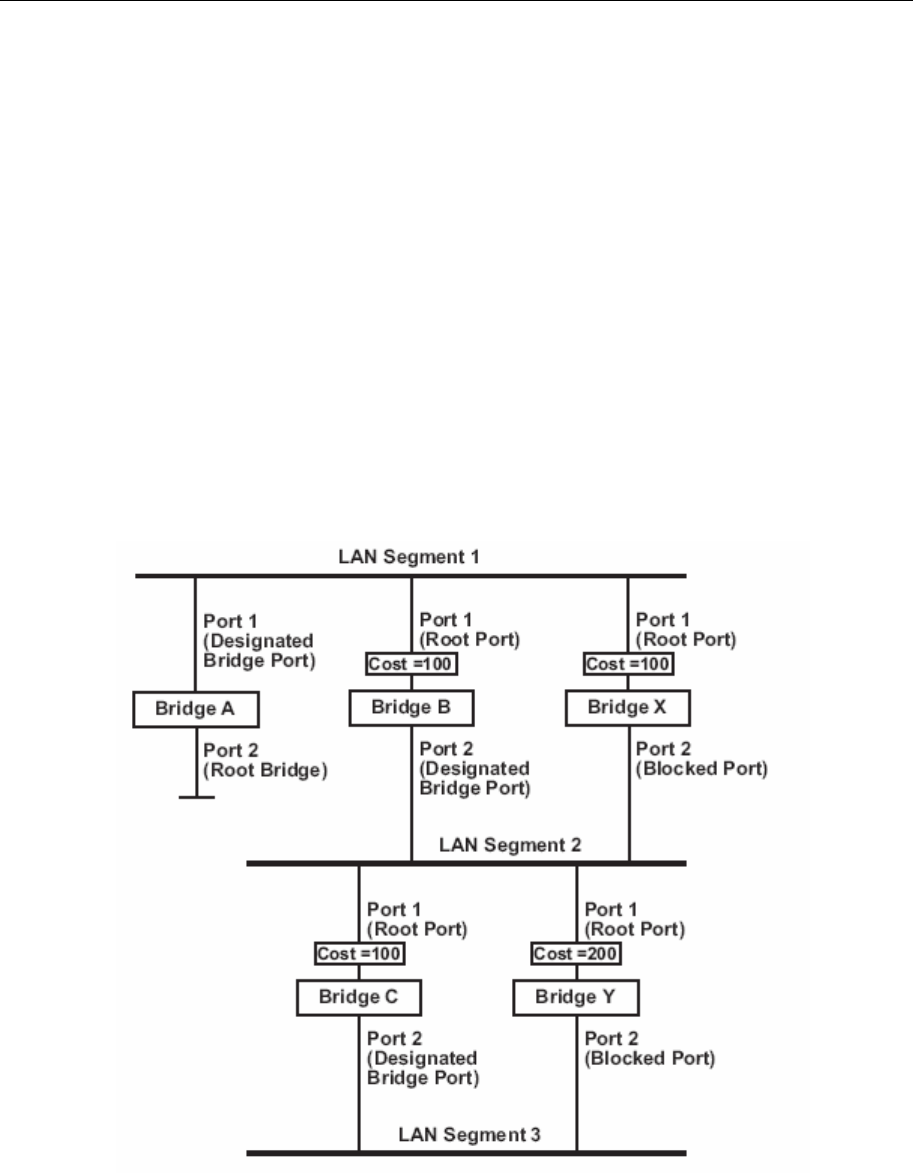
PT-7728 User’s Manual Featured Functions
3-30
STP Reconfiguration
Once the network topology has stabilized, each bridge listens for "Hello" BPDUs that are
transmitted from the Root Bridge at regular intervals. If a bridge does not receive a "Hello" BPDU
after a certain interval (the Max Age time), the bridge assumes that the Root Bridge, or a link
between itself and the Root Bridge, has gone down. This will trigger the bridge to reconfigure the
network to account for the change. If you have configured an SNMP trap destination, the first
bridge to detect a topology change in your network sends out an SNMP trap.
Differences between RSTP and STP
RSTP is similar to STP, but includes additional information in the BPDUs that allow each bridge
to confirm that it has taken action to prevent loops from forming when it decides to enable a link
to a neighboring bridge. Adjacent bridges connected via point-to-point links will be able to enable
a link without waiting to ensure that all other bridges in the network have had time to react to the
change. The main benefit of RSTP is that the configuration decision is made locally rather than
network-wide, allowing RSTP can carry out automatic configuration and restore a link faster than
STP.
STP Example
The LAN shown below has three segments, with adjacent segments connected using two possible
links. The various STP factors, such as Cost, Root Port, Designated Bridge Port, and Blocked Port
are shown in the figure.


















